We always see startups like OpenAI and Anthropic as the engines of innovation, but behind every success story, there are countless ventures that don’t make it. The truth is that 90% of startups fail—but why?
Understanding the statistics behind these failures is important because they tell a story – one full of lessons, pitfalls, and opportunities.
In this article, we’ll break down the most important startup failure stats, explore the most common reasons businesses don’t survive, and share success stories that prove it’s possible to thrive.
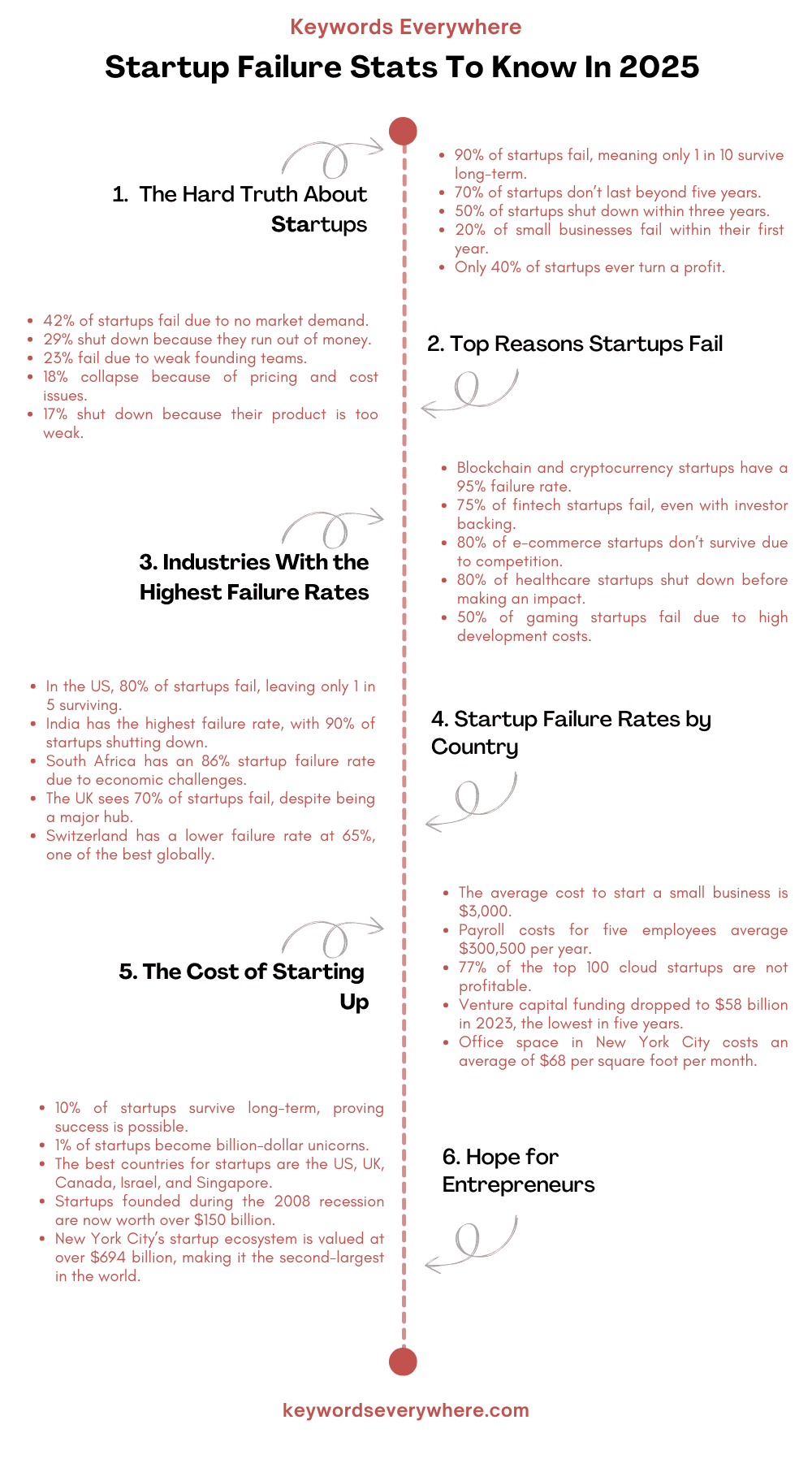
Top Startup Failure Stats
Starting a business is an exciting journey, but the numbers reveal a different reality. About 70% of startups don’t make it past their first five years, and failure rates are high across different industries.
Before diving into specifics, here are some of the most eye-opening statistics about startup failures:
1. Around 1 in 10 startups don’t make it past their first year. The U.S. BLS shows that as time goes on, the failure rate keeps rising, with most businesses shutting down before they reach the 10-year mark.
2. In the long run, 90% of startups fail—meaning only 1 out of 10 survives in the long term.
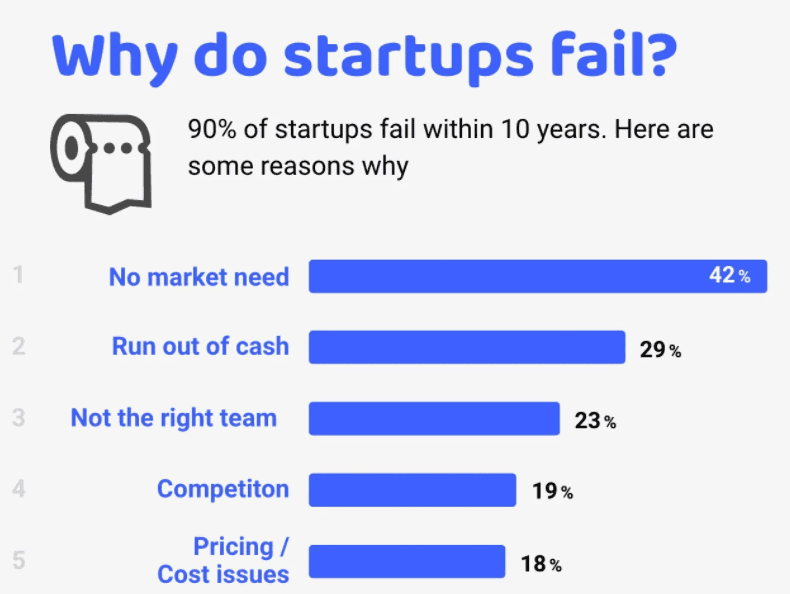
Why do startups fail in the long run
3. About 1 in 5 small businesses close within their first year. Early-stage survival depends on smart planning, knowing your market, and managing money wisely.
4. The #1 reason startups fail is misjudging market demand—this happens in 42% of cases. In other words, nearly half of failed startups built something people didn’t really want.
5. The second biggest reason for startup failure is running out of money, affecting 29% of businesses.
6. Despite the high failure rate (90%), interest in starting a business is still strong. Keywords Everywhere reports that the term “start a startup” gets searched over 300,000 times a month, proving that many people are still eager to take the risk.
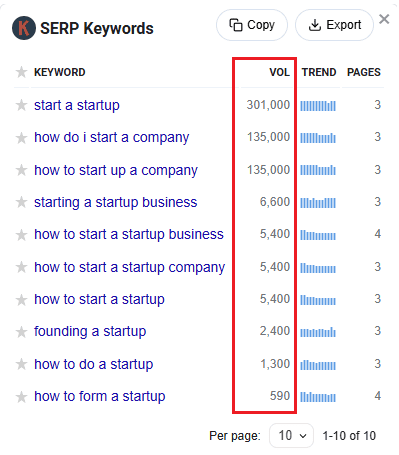
7. Startup founders spend nearly 40% of their time on non-revenue-generating tasks like hiring, HR, and payroll instead of focusing on growth and making money.
8. Out of the top 100 cloud companies, only 23 are actually profitable. That means 77% are still burning through cash.
9. In Q4 2023, venture capital funding dropped to $58 billion, the lowest in five years. For comparison, in Q4 2021, funding was nearly $200 billion—a massive difference.
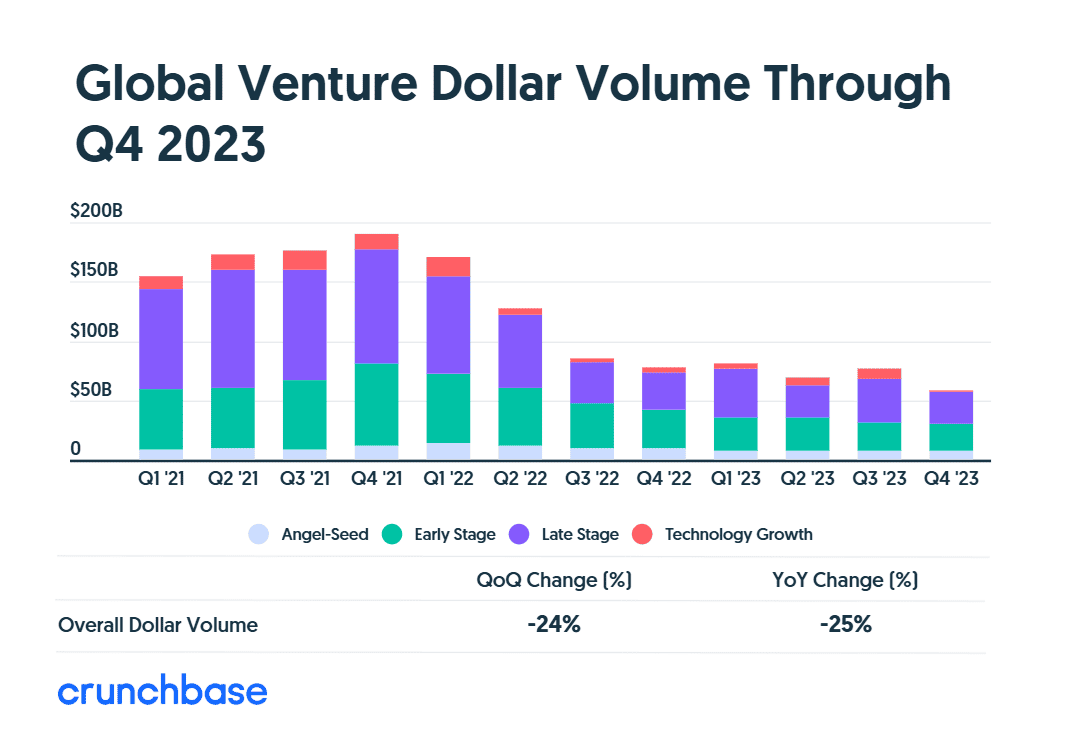
Global venture dollar volume (2023)
10. According to a 2018 CB Insights study, the chance of a startup becoming a billion-dollar unicorn is just 1%.
Which Industries Struggle the Most?
Not all startup industries are created equal: some sectors offer a higher chance of survival, and others are notorious for their high failure rates.
That means certain sectors are more risky to invest in, whether it’s due to market saturation, regulatory challenges, or capital intensity.
Here are the startup failure stats that show those industries where startups struggle the most:
11. Blockchain and cryptocurrency startups face some of the toughest challenges in the business world. A massive 95% of them fail, and most have an extremely short lifespan.
12. The fintech industry is just as brutal, even for startups backed by investors. Three out of four fintech startups don’t make it, leading to a 75% failure rate.
13. E-commerce startups may seem like an attractive business, but success is far from guaranteed. 80% of e-commerce businesses fail due to intense competition, high customer acquisition costs, and challenges in scaling profitably.
14. Even in IT and tech startups, where innovation thrives, failure is common. 63% of IT startups shut down, and a quarter of them don’t even make it past their first year, and only about 10% survive long-term.
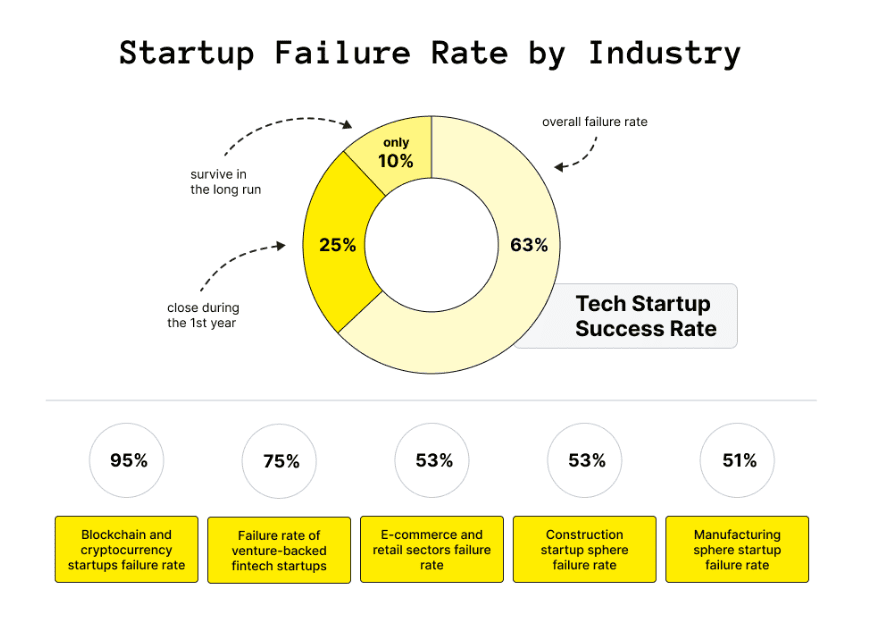
Startup failure rate by industry
15. Construction and retail startups also struggle, with 53% of businesses failing in these industries.
16. Healthcare startups face some of the highest failure rates, with 80% shutting down before they can make a lasting impact. The first year is especially risky, with 20% closing down, and by the fourth year, half of healthcare startups are out of business.
17. Manufacturing startups have a 51% failure rate, making them one of the riskier industries to enter. The biggest reasons behind these failures are running out of money and struggling to secure additional funding.
18. Gaming industry startups have a 50% failure rate. While gaming is a booming industry, breaking through is incredibly tough due to high development costs, market saturation, and difficulty in attracting a loyal player base.
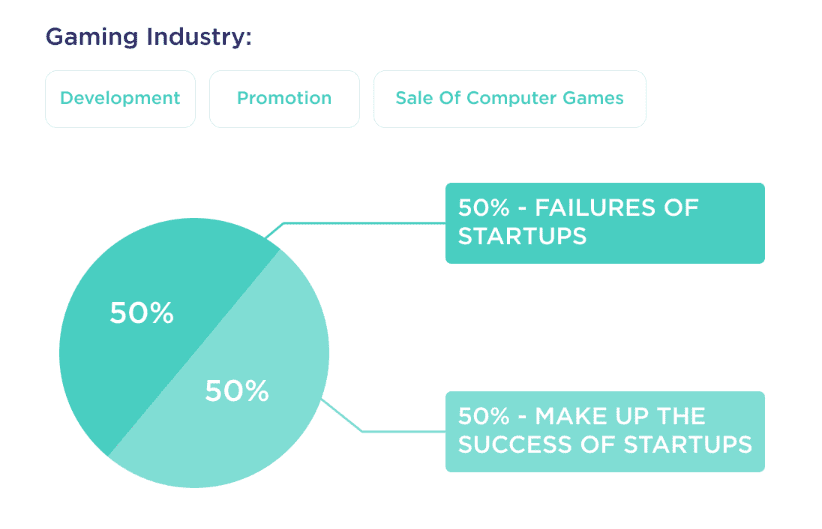
Gaming industry startup failure rate
Startup Failure Stats by Country
In the US, about 35% of startups survive beyond three years. Brazil, on the other hand, has a different rate—50% of startups survive over four years.
That means countries also impact startup failure rates. Economic conditions, access to funding, government support, and market demand all play an important role in determining whether a business will thrive in the future or fail due to regional factors.
Here are the startup failure rates across different countries to see which regions are the toughest for new businesses.
19. 80% of startups don’t last in the USA, showing how hard it is to succeed there. Even with lots of funding and resources, competition is tough, and only 1 in 5 startups make it.
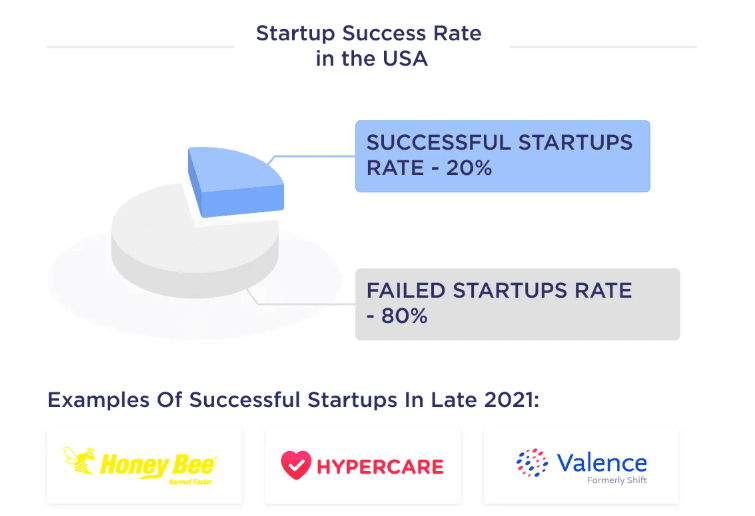
Startup failure rate in the USA
20. In India, 90% of startups don’t survive, making it the country with the highest startup failure rate. 1 in 5 startups fail in the first year, and by the second year, 30% have already shut down.
21. South Africa has a failure rate of 86%. It’s hard for new businesses to survive here because of economic challenges and limited funding.
22. Canada’s startup failure rate is also 80%, just like in the U.S. The government supports new businesses, but many struggle to grow or get enough funding.
23. 70% of startups fail in the UK. London is a big startup hub, but high costs and complicated rules make it hard for new businesses to last.
24. France also has a high failure rate of 80%, showing that even with strong investments and support, most startups don’t make it.
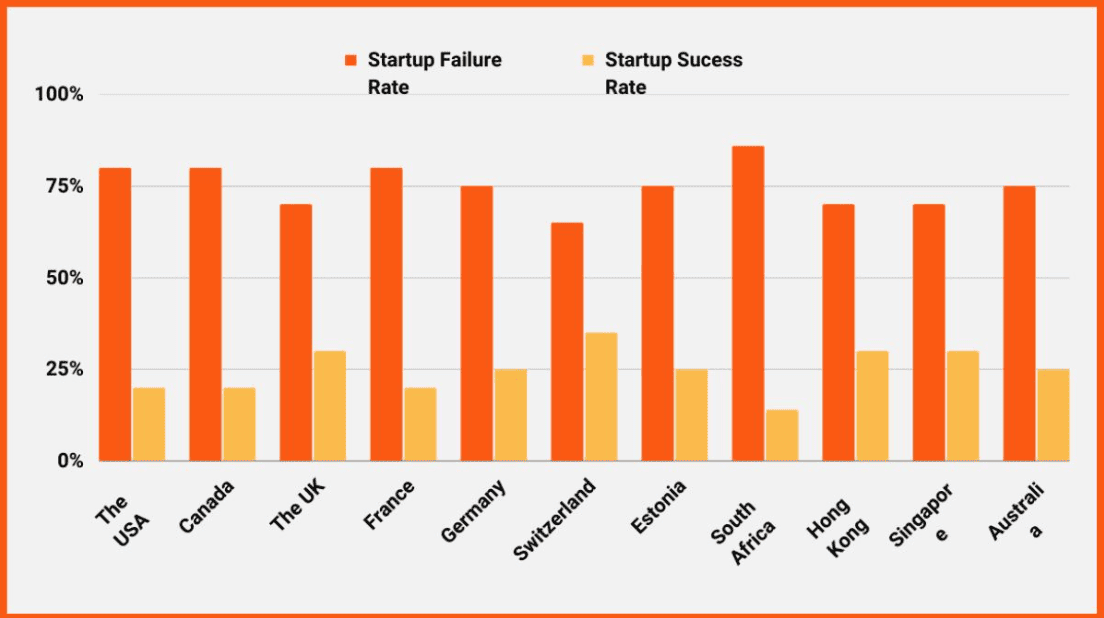
Startup failure rate by country
25. In Germany, 75% of startups fail, leaving just 1 in 4 surviving. Even though Germany has a strong economy, many startups struggle to grow beyond the local market.
26. Switzerland has a lower failure rate, with 65% of startups shutting down.
27. In Hong Kong and Singapore, 70% of startups don’t make it in the long run.
Reasons Why Startups Fail
Now that we’ve covered the regional stats, the next question is: Why do so many startups fail? While there’s no single answer, certain mistakes and challenges consistently cause businesses to shut down.
From financial mismanagement to poor product-market fit, here are some of the most common reasons startups don’t survive.
28. 42% of startups fail because there’s no real need for their product or service. If a business doesn’t solve a real problem, it struggles a lot to attract customers.
29. Running out of money causes 29% of startups to fail. Managing finances wisely, budgeting well, and securing enough funding are essential to keep a business running and growing.
30. 23% of startups fail as they don’t have the right team, and 19% shut down because of strong competition.
31. Pricing and cost issues lead to failure for 18% of startups, while 17% fail due to a weak product. Getting pricing right and ensuring a high-quality offering is crucial for success.
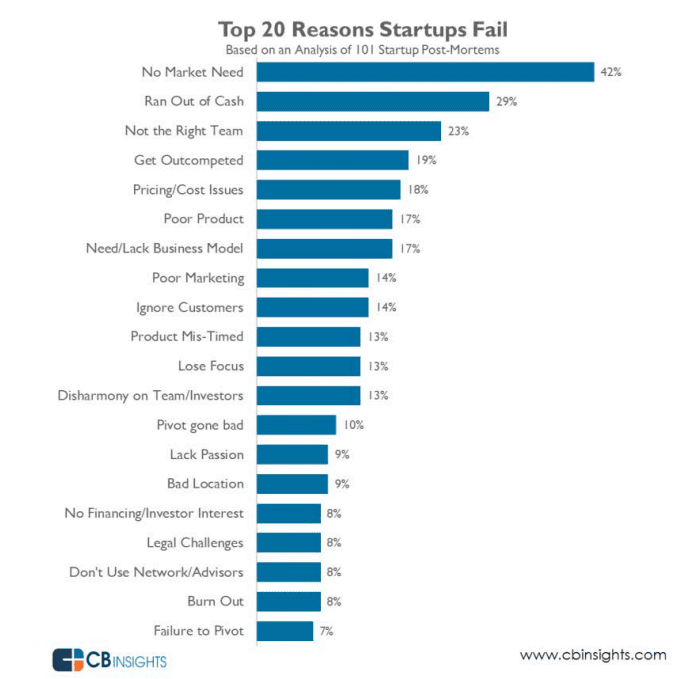
Top reasons why startups fail
32. Ignoring customers leads to failure for 14% of startups. Listening to feedback and making changes based on customer needs can improve products and build long-term loyalty.
33. Burnout is a real risk, with 8% of startup failures linked to founders being overworked. This shows that running a startup demands long hours and high stress.
34. 9% of startups fail because of a lack of passion or industry knowledge. A great idea alone isn’t enough—founders need deep understanding and genuine interest in their field to succeed.
35. Legal issues cause 18% of startups to shut down, and 22% fail due to lack of focus. Navigating regulations and staying committed to a clear vision are key to avoiding costly mistakes.
36. 17% of startups fail because they don’t have a solid business model. Knowing how to generate revenue and sustain operations from the start is crucial.
37. 8% of startups fail due to poor networking. Building strong relationships with investors and customers can create valuable opportunities and support growth.
Startup Failure Stats by Stage
Failure doesn’t happen overnight. Some startups collapse within months, while others make it a few years before running into trouble. But at which stage are businesses most vulnerable?
Here, we’ll look at statistics on when startups are most likely to fail and the challenges they face at different stages of growth.
38. Around 20% of startups don’t survive their first year, and over time, 90% will eventually shut down. Even unicorn startups—those that achieve massive valuations—fail 99% of the time.
39. 30% of startups close within three years, 50% don’t last five years, and 70% shut down within a decade. Only 40% manage to turn a profit, showing how tough long-term success can be.
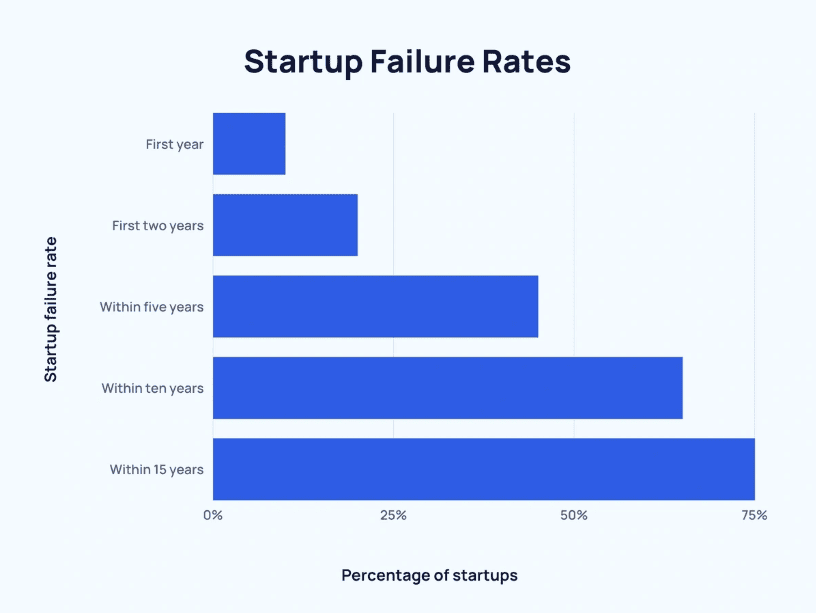
Startup failure rates
40. About 60% of pre-seed startups fail before reaching the seed stage. At this early phase, many struggle with unclear ideas and a lack of direction, making it hard to secure funding.
41. Nearly as many businesses fail at the seed stage as at pre-seed. Cash flow problems and failing to match their product to market demand prevent many startups from growing.
42. 35% of startups that raise Series A funding don’t make it to the next level. Many founders rush to scale without focusing on the basics, leading to poor financial management and leadership struggles.
43. Startups that reach Series C have only a 1% chance of failing. At this point, the biggest challenges are keeping up innovation and staying ahead of competitors, but the risk of shutting down drops significantly.
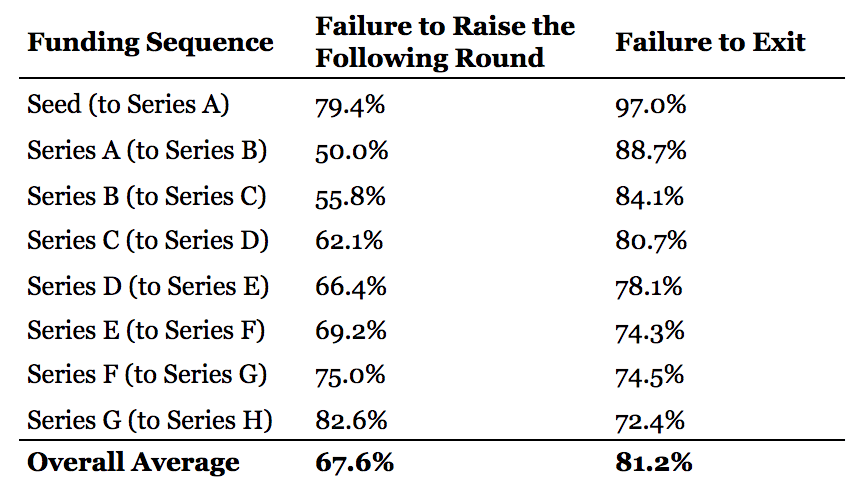
Table of startup failure rate by stage
Startup Cost Statistics
Starting a business requires money and lots of it. But how much do startups really spend in their early stages?
From bootstrapped ventures to well-funded companies, startup costs can vary based on things like industry, location, and growth strategy.
Here are some startup failure stats and see how financial demands impact survival:
44. Starting a small business in the U.S. costs about $3,000 on average. Home-based startups, including franchises, typically need between $2,000 and $5,000 to get off the ground.
45. Payroll is one of the biggest expenses, averaging around $300,500 for a team of five employees. Salaries can quickly add up, making it a major financial challenge for new businesses.

Top expenses during first year of business
46. Big-name startups like Airbnb and Uber have taken on over a billion dollars in debt to grow and succeed, showing that even the biggest companies need massive funding to scale.
47. Some businesses can start with less than $5,000, especially in industries like accounting, online retail, construction, and landscaping. These businesses often have lower upfront costs.
48. The most expensive startups to launch include restaurants, medical offices, and manufacturing companies, which typically require over $100,000 to get started due to high equipment and operational costs.
49. Monthly expenses depend on where the business is located. In cities like New York, office space alone costs an average of $68 per square foot per month, making it one of the most expensive places to start a company.
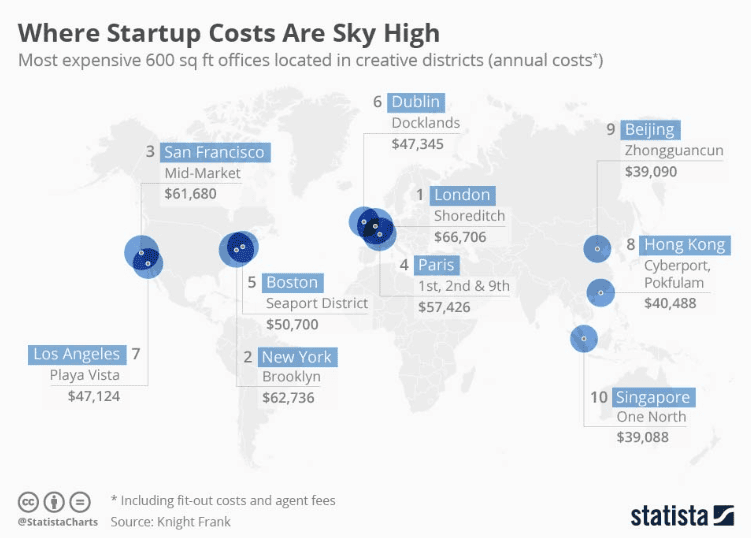
Places where startup costs are high
Latest Trends in Startup Failures
The startup world is constantly evolving, and so are the reasons businesses fail. Economic downturns, changes in consumer behavior, and changes in venture capital funding all influence startup survival rates.
In this section, we’ll explore recent trends in startup failures and what they mean for future entrepreneurs.
50. Startup failures in the U.S. jumped by 58% in early 2024, continuing a sharp rise over the past two years. Between Q1 2022 and Q1 2023, shutdowns increased by 124%, and from Q1 2023 to Q1 2024, they rose another 58%. Due to economic challenges and funding shortages, more startups are struggling to stay afloat.
51. Venture funding has dropped significantly, with over 1,000 fewer investments in Q4 2023 compared to Q4 2021. Many startups find it harder to secure capital which makes survival even more difficult.
52. The number of unicorn startups—companies valued at over $1 billion—has been declining since 2021. In 2021, there were 595 new unicorns, but that number fell to 359 in 2022, reflecting a slowdown in high-growth startups reaching billion-dollar valuations.
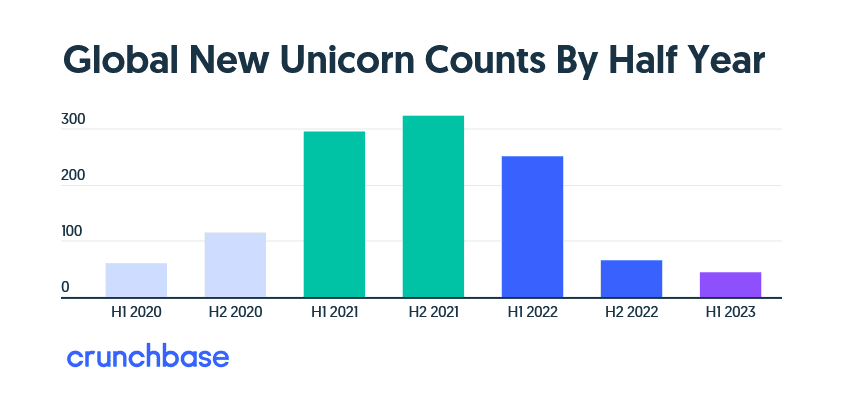
Global new unicorn counts by half year
53. Layoffs in the startup world are at their highest level since 2009, according to CNBC. Despite this, 57% of startups say layoffs are extremely unlikely, and 20% say they are somewhat doubtful. This suggests that while some companies are cutting jobs, others remain optimistic.
54. Smaller startups with fewer than 10 full-time employees are 34% less likely to consider layoffs compared to those with 11-50 employees. However, 10% of startups considering layoffs tend to be much larger, often with hundreds of employees.
Don’t Let the Numbers Stop You: Startup Success Stats
While failure is common, many startups do beat the odds and go on to become industry leaders. What do these successful companies have in common? What factors increase a startup’s chances of thriving?
Here are some inspiring startup success stats that show winning is possible, despite all these challenges.
55. Nine out of ten startups survive their first year, and half make it past five years. However, in the long run, only 10% to 20% of startups—whether tech or non-tech—truly succeed.
56. The U.S. ranks as the best country for startups, followed by the U.K., Israel, Canada, and Singapore.
57. New York City’s startup ecosystem is valued at over $694 billion, making it the second-largest in the world after Silicon Valley. The city continues to be a major hub for entrepreneurs, investors, and tech giants.
58. Stanford University has produced more startup founders than any other U.S. university. A total of 465 Stanford graduates have launched startups, including Google, StubHub, and Zillow.
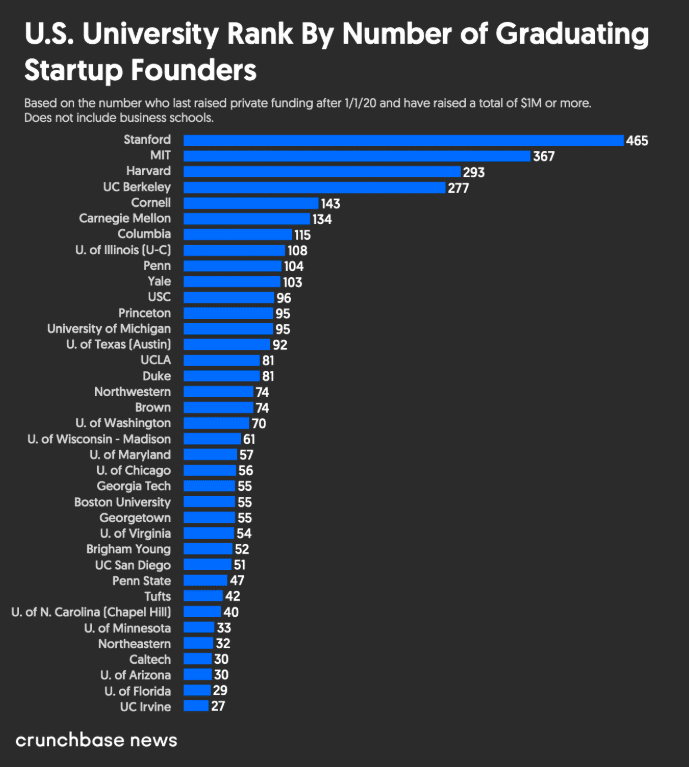
Startup founders graduating from top U.S. Universities
59. Entrepreneurial confidence is high in Saudi Arabia, where 91% of working-age adults believe they have the skills to start a business. Venezuela (85%) and India (82%) also show strong confidence in entrepreneurship.
60. Health, medicine, and wellness are the top industries for female-led startups. In 2020, 14% of female-founded startups focused on healthcare, while 9% were in finance, 8% in retail and e-commerce, and 7% in food.
61. Economic downturns often spark innovation. Startups founded during the 2008 recession—including several major tech unicorns—are now collectively worth nearly $150 billion.
Conclusion
Startups have always faced tough odds, with around 90% failing over time. This statistic holds true across industries and countries, but failure isn’t always what people assume.
In many cases, a startup’s failure doesn’t mean it has completely shut down—it often just means it never became profitable. Some startups continue to operate for years, surviving on investor funding without ever turning a profit.
Ironically, the real reason many startups fail isn’t their product or market fit—it’s when investors lose interest and stop providing funding.
The truth is that startups are about adaptation. Those who pivot, learn from mistakes and keep pushing forward have a much better shot at defying the odds.


